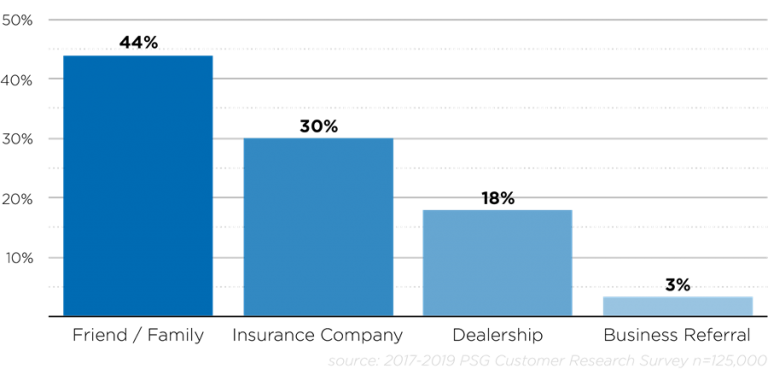The Final Mistake
We were recently approached by a client who was confused as to why, after reluctantly shutting off his digital advertising, they didn’t experience a decrease in sales. After a little investigating we uncovered that he was actually attributing sales to the wrong channels.

As we’ve said before, today’s customer’s buying journey is far from linear. It involves many different channels or customer touchpoints, so it’s important to understand which ones are driving the most value to your business.
As this seems to be a common occurrence, we decided to end our Top 3 Marketing Mistakes series with something called “Last Click Attribution”.
Last Click What?
I’ll explain it through a typical journey of a collision customer to demonstrate how last click attribution impacts how you determine the ROI on your marketing investments.
While driving home from work, a consumer is involved in an accident. The next day he contacts his insurance company and is offered 3 shops on the insurance company’s preferred list. Later, a colleague walks over and learns about the accident. Having recently been in an accident himself, the colleague suggests the shop he used. He mentions how incredible the experience was and highly recommends it. At lunch, the consumer notices that his colleague’s recommendation is on the insurance preferred list and searches the shop by name on Google. He clicks on the first link that comes up, which happens to be a digital ad for the shop, and navigates directly to the location page to see where they are located. While at the shop, the estimator casually asks the consumer how he found them. Naturally, the consumer’s mind goes to the last thing he did and says Google.
f you are like most shops, the answer to both is “I really don’t know.” The problem is that merely looking at the end of a customer’s buying journey isn’t enough and could provide a false sense of security in the wrong channel of your marketing investments.
So What Should I Do?
-
You need to take a more data-driven approach to your marketing and consider your customer’s entire purchase journey, from start to finish. For PSG customers, this information can be found on your monthly Marketing Dashboard and Referral Analysis.
-
If you don’t receive marketing reports from PSG, you need to take a look at your entire marketing spend, starting with your DRP relationships and any pre or post-repair marketing, and determine how each part of your marketing budget is impacting your customer’s decision. You also need to look at the experience you deliver and ask if it’s really referral worthy or just good enough.
-
If you are running Google Ads, check to see if you have negative keywords associated with your shop name. This will prevent Google from serving your ad when someone searches your shop name. This is a quick way to better determine the success of your Google Ad campaign.
-
As we mentioned in our last 2 emails, look at your Google Analytics! Those insights should help you understand the value digital has on the customer’s journey.
Last Thought:
The takeaway here is to realize that there are more factors involved in your customer’s buying decision than you think. Although they may have gone to your website or read your reviews, you have to ask what lead them to consider you in the first place. Not investing in all areas of the journey may end up costing you more in the long run.



